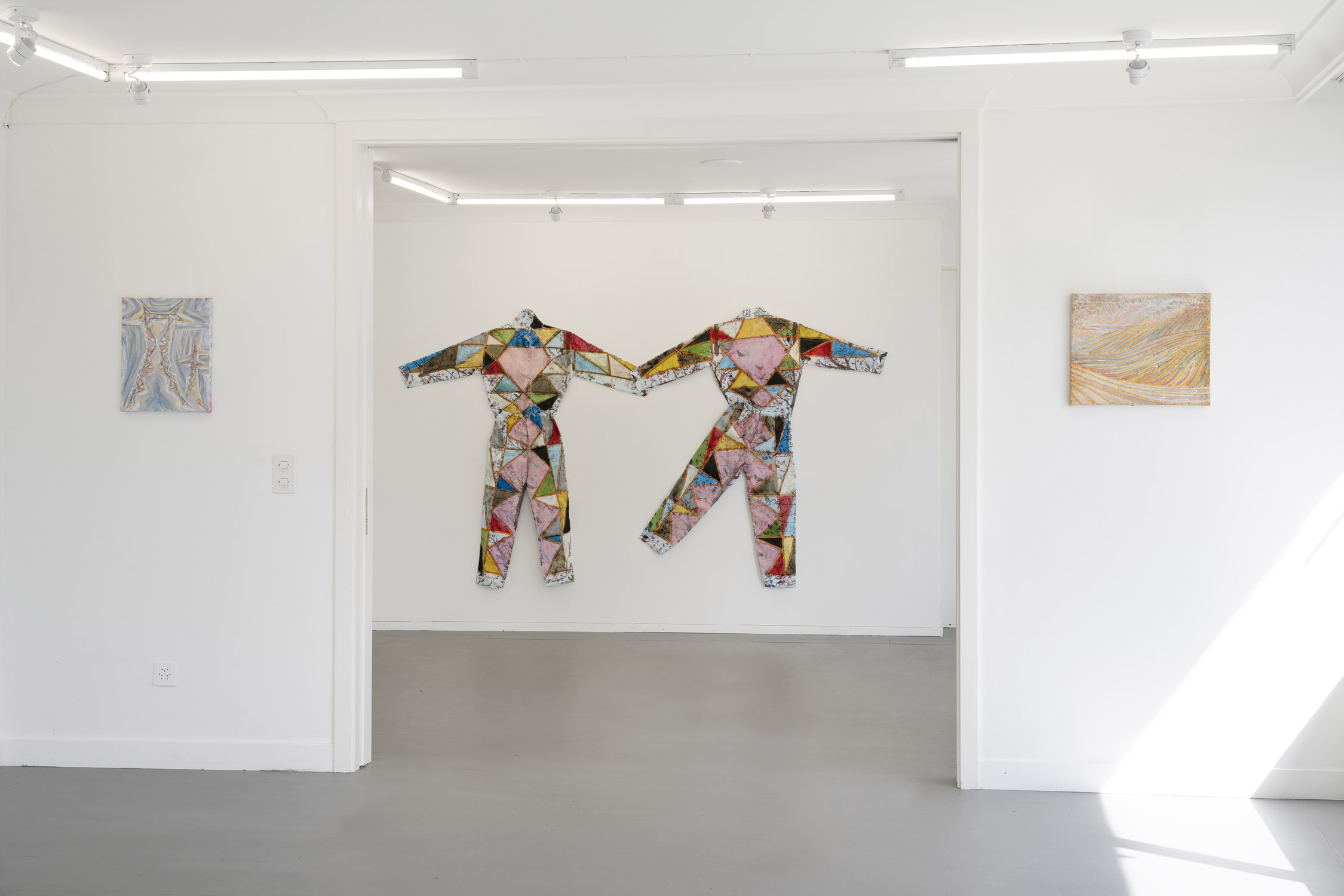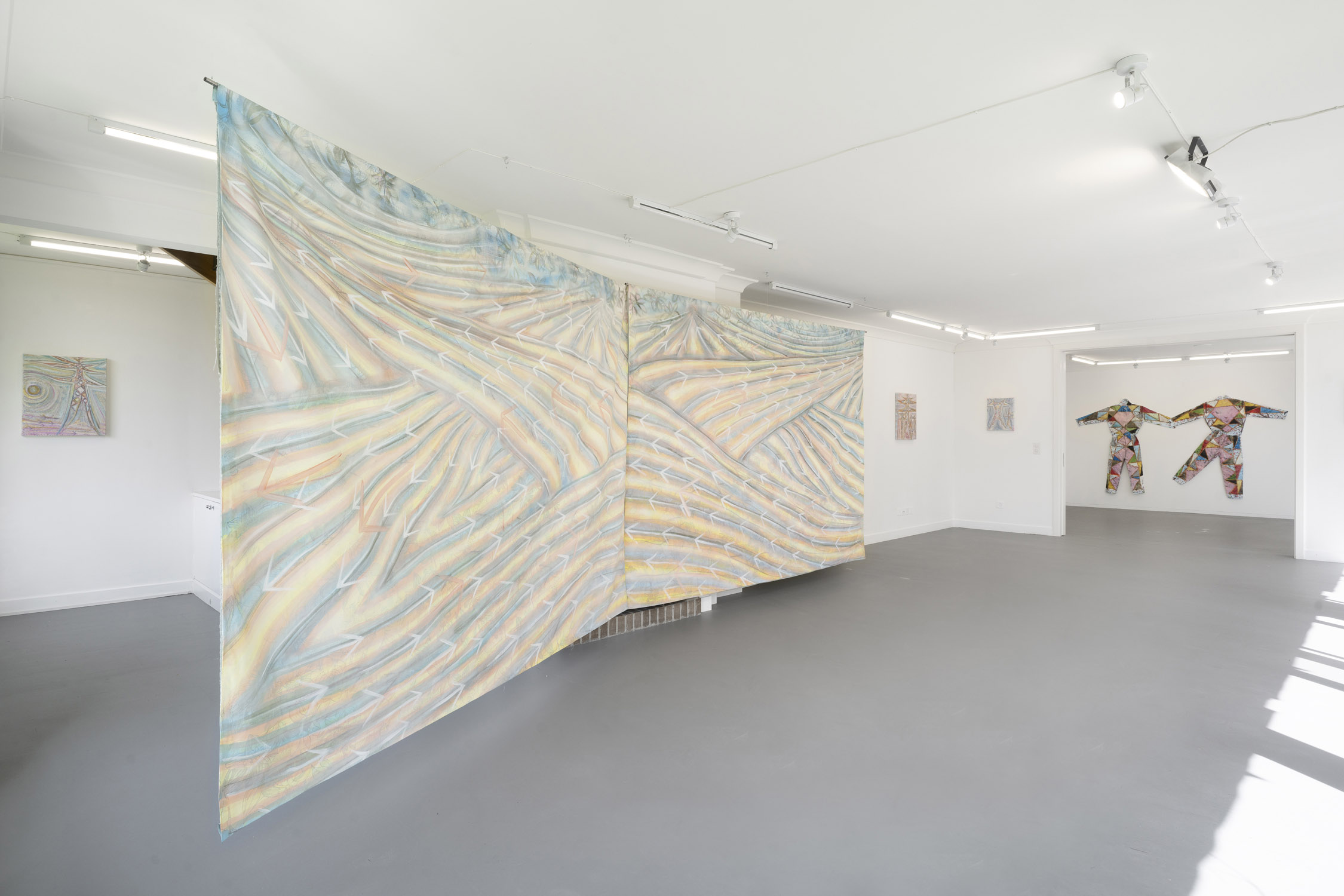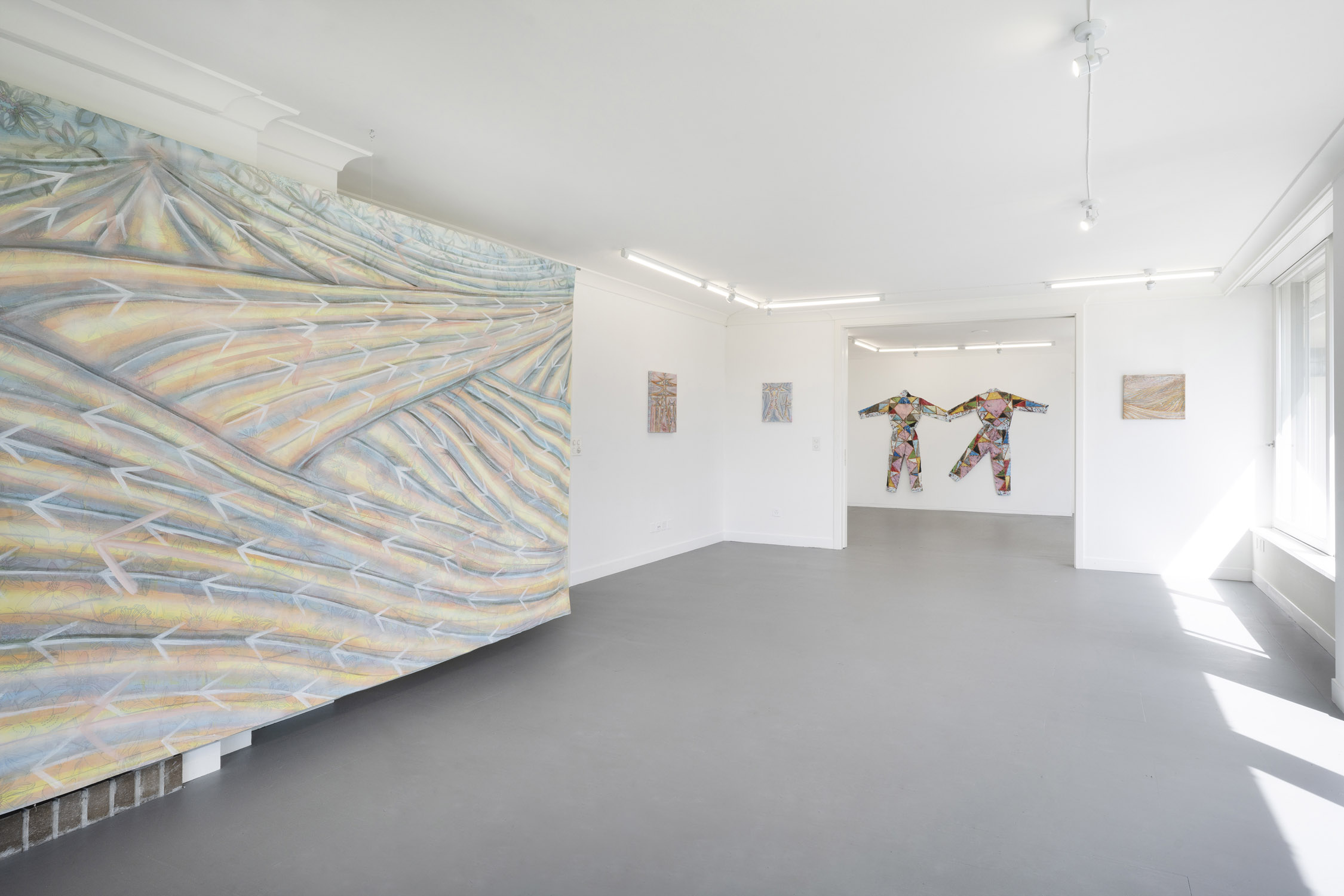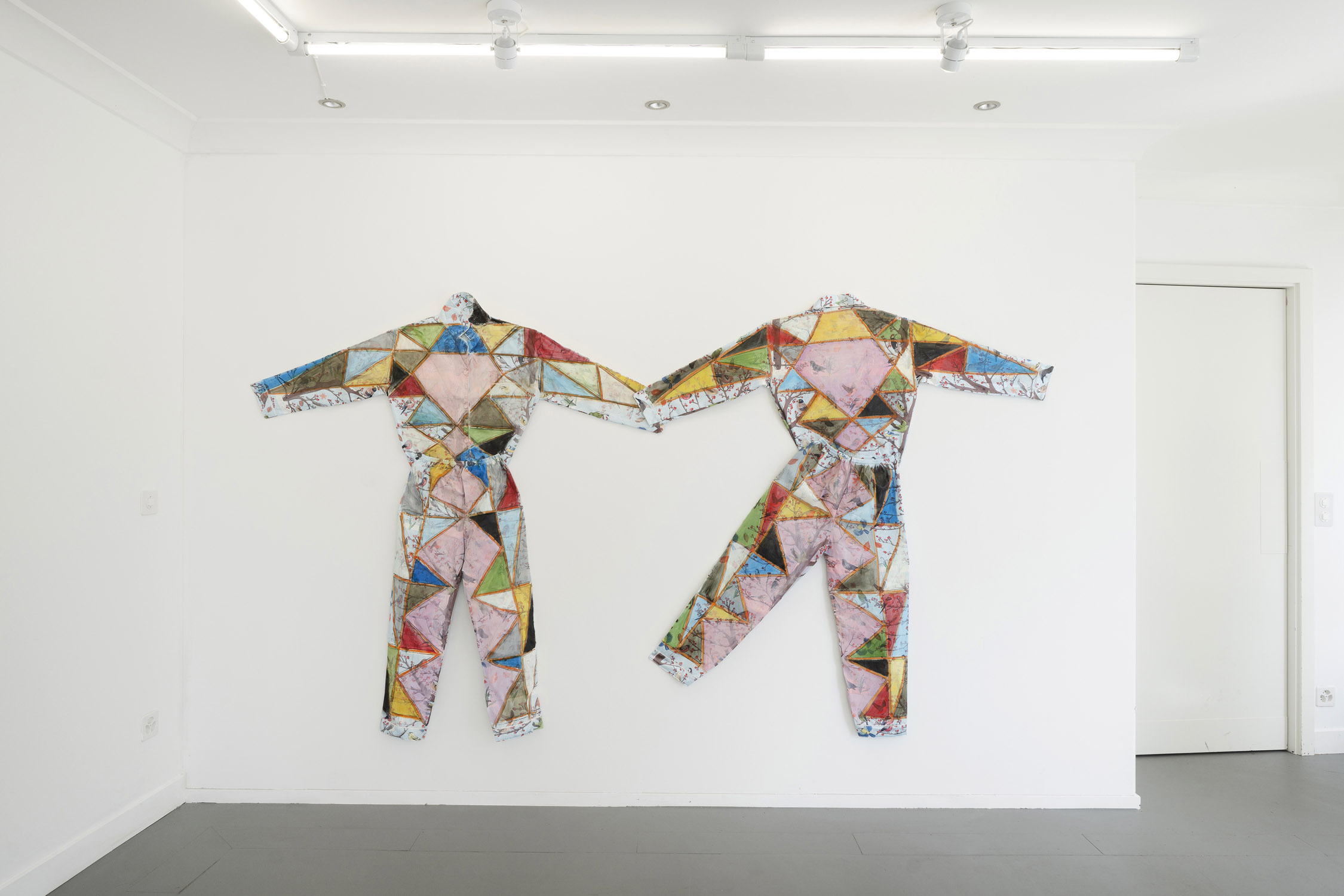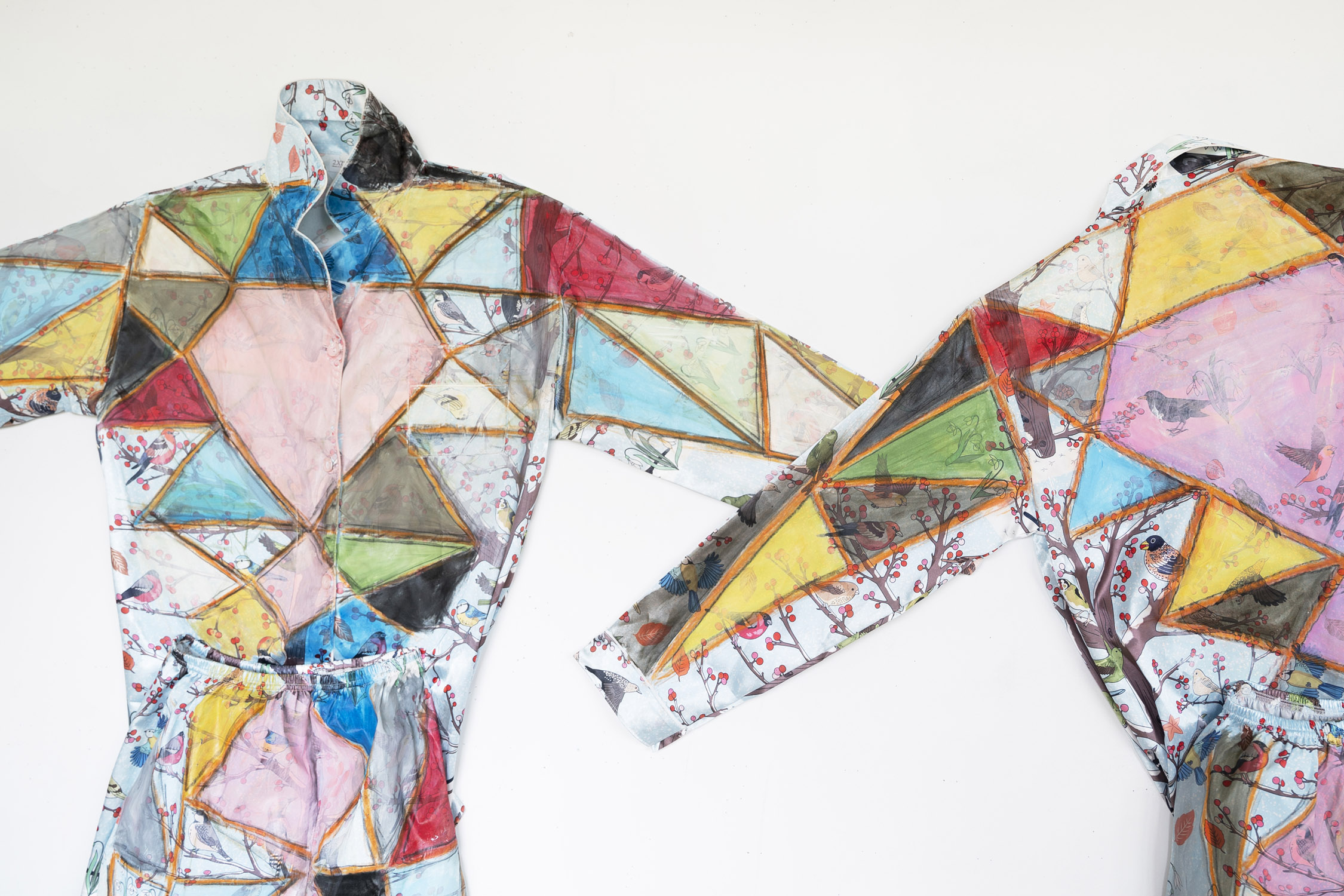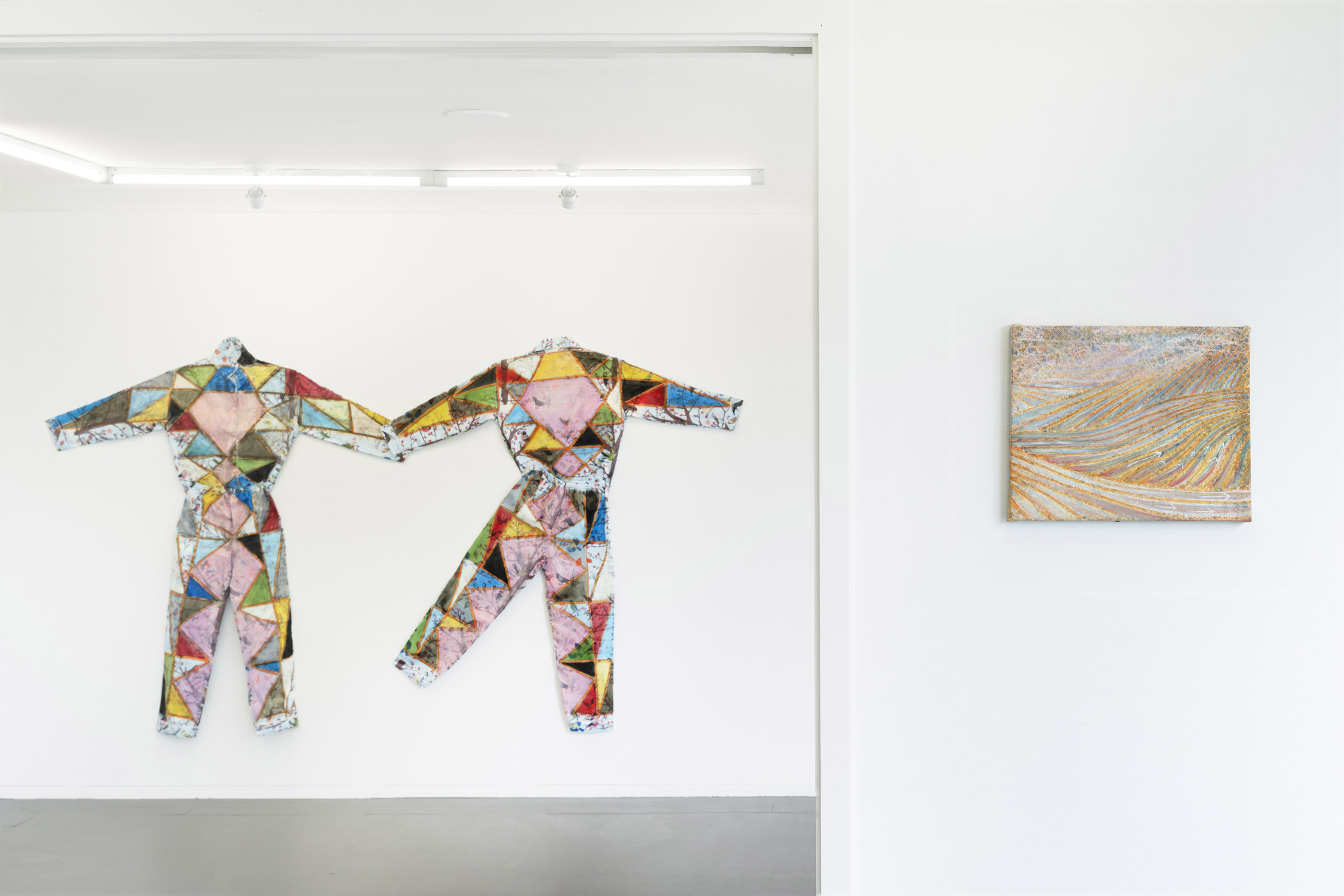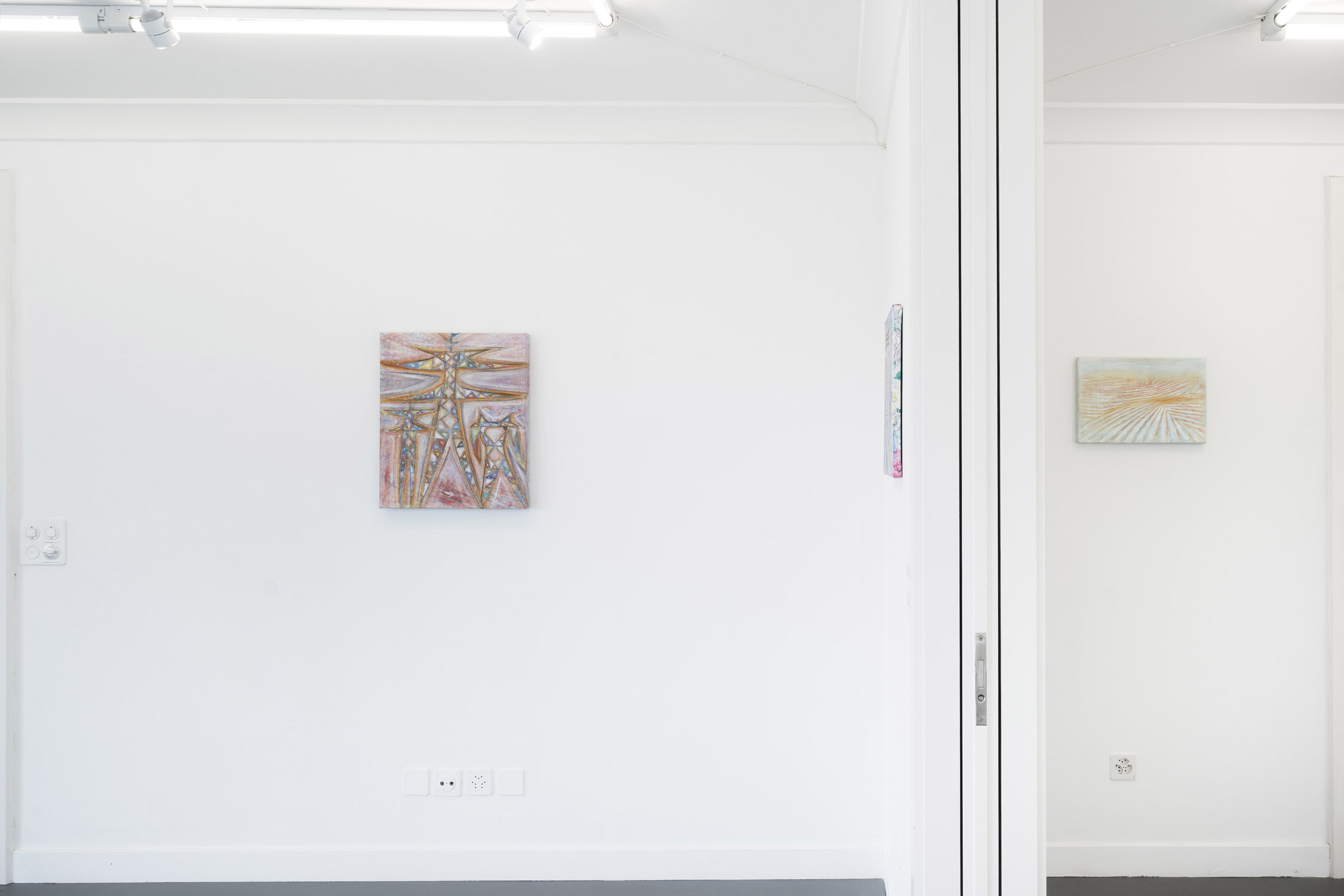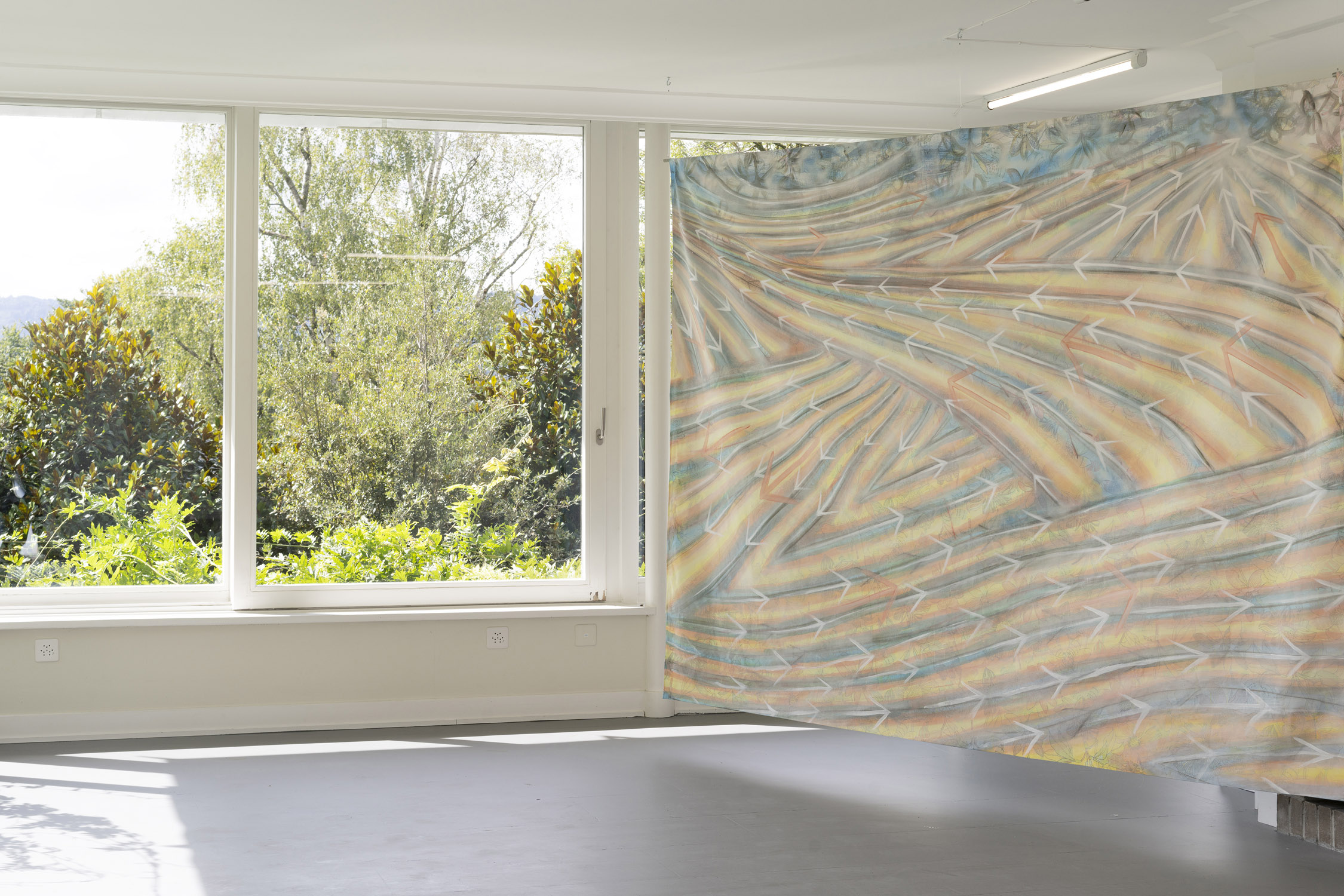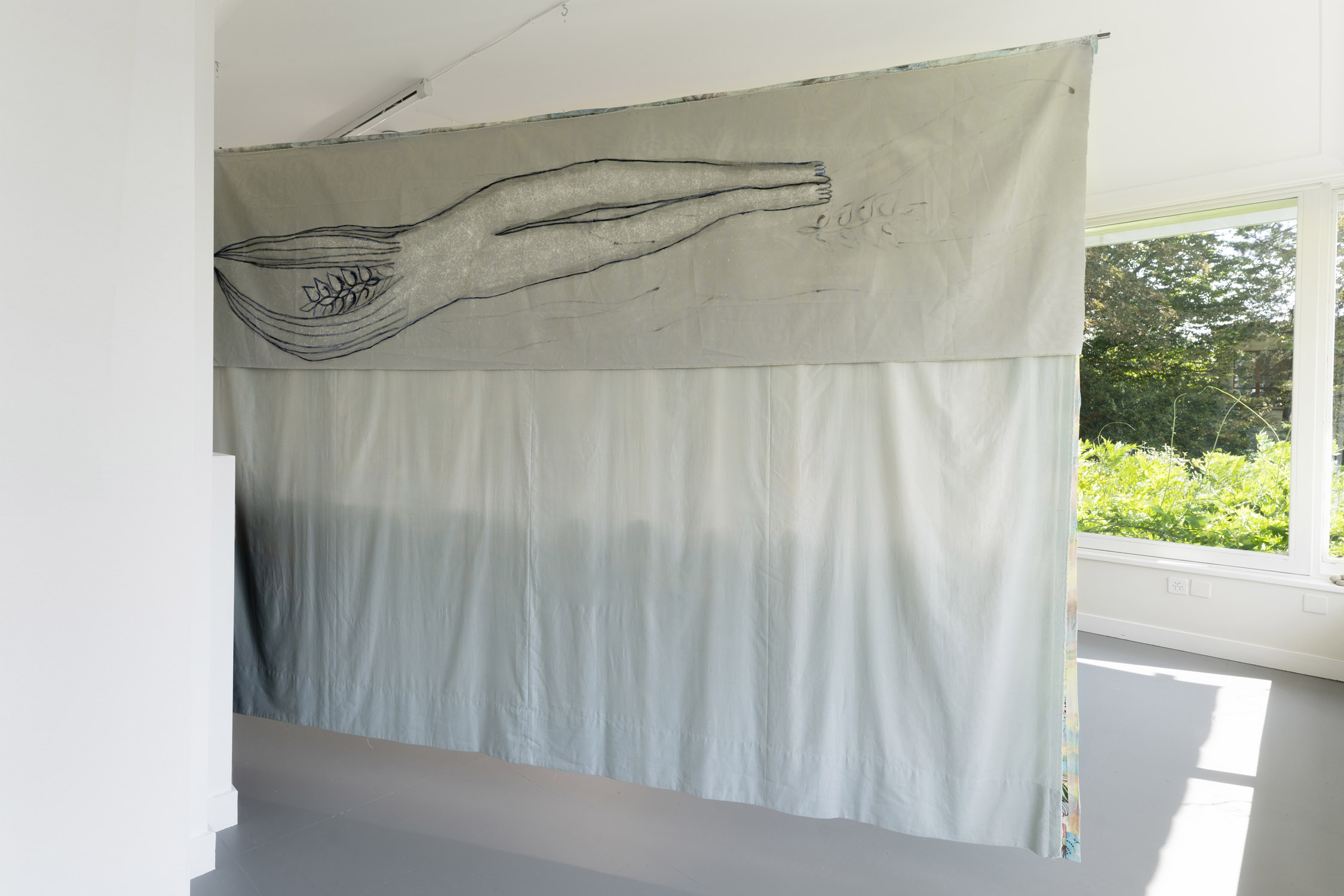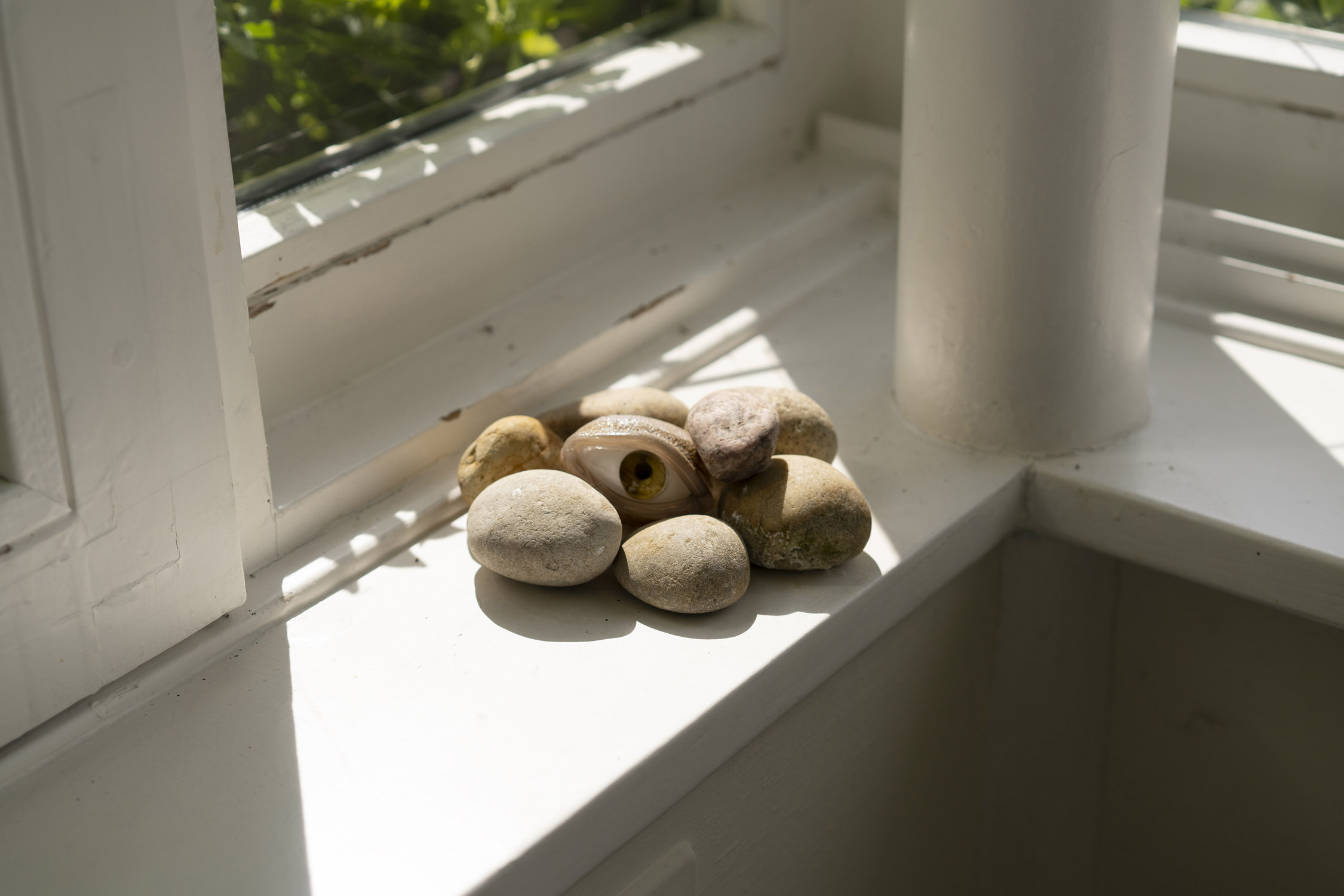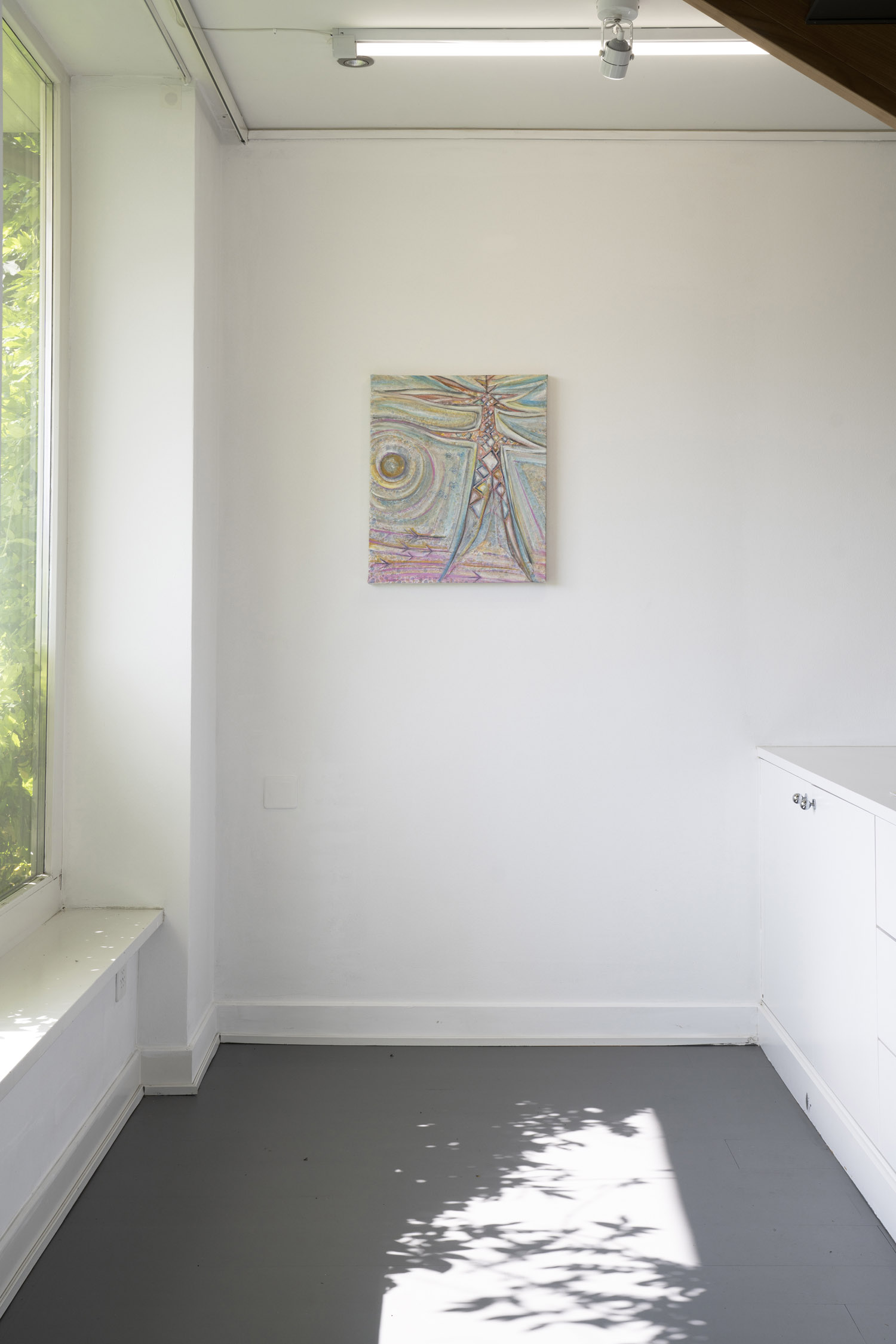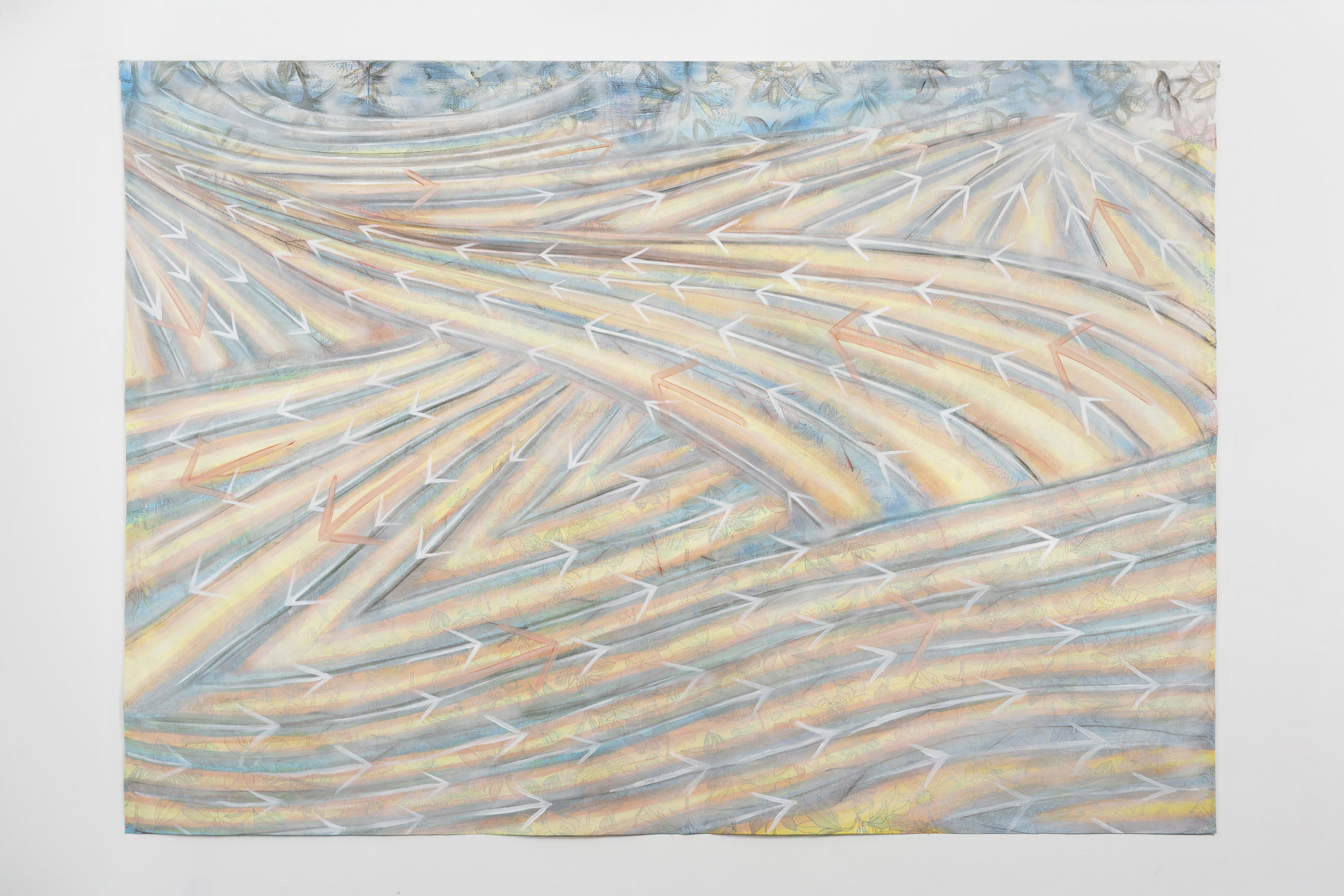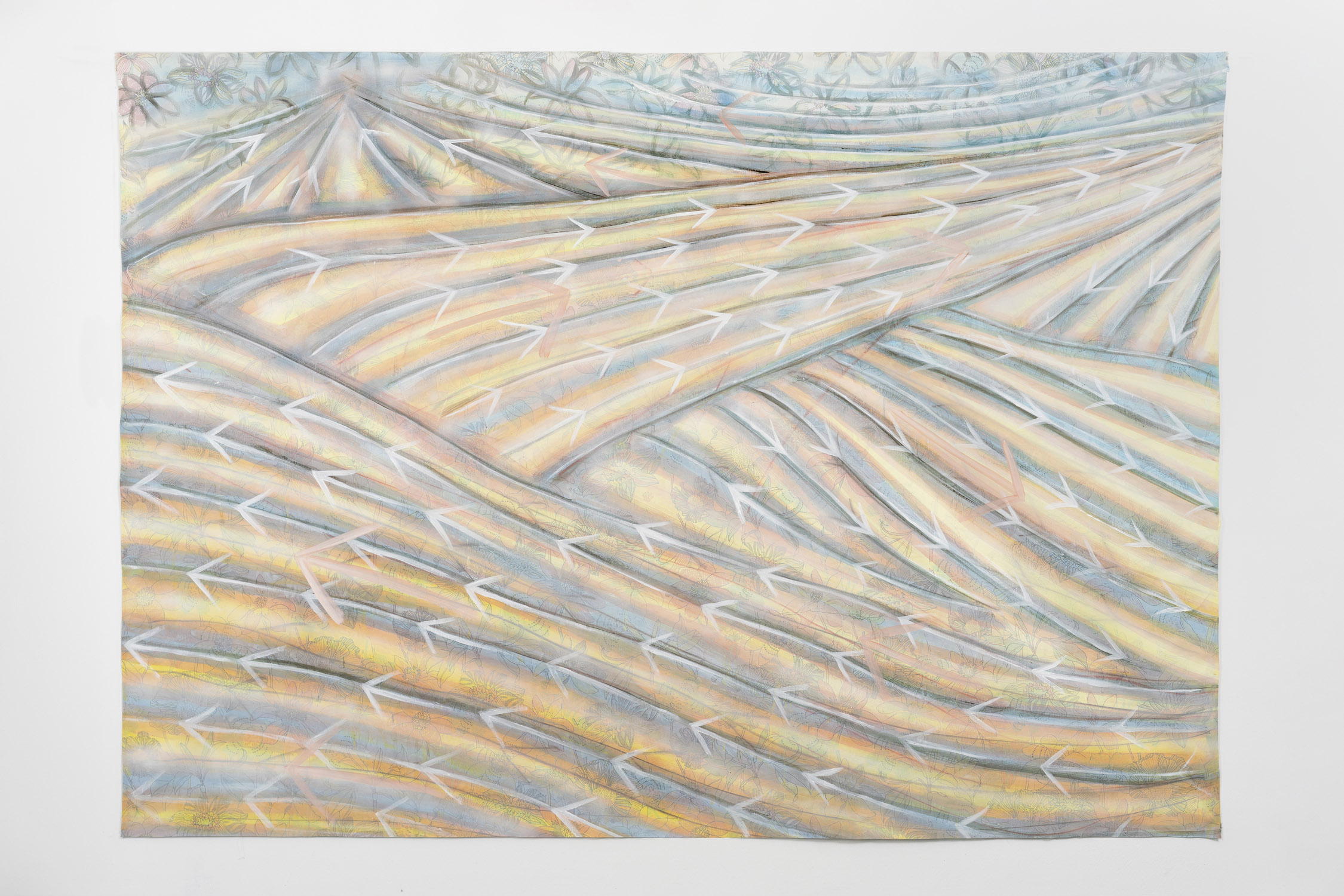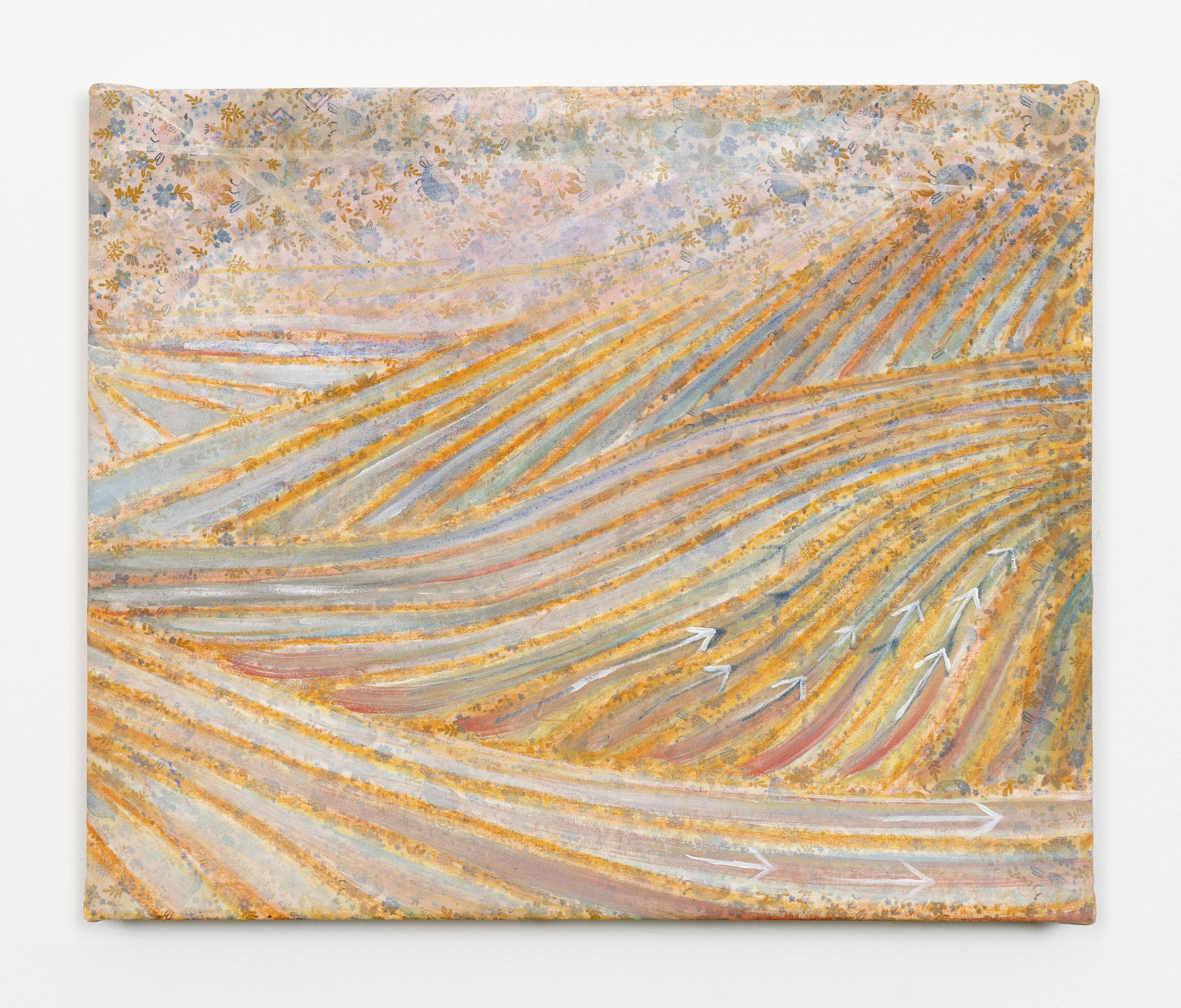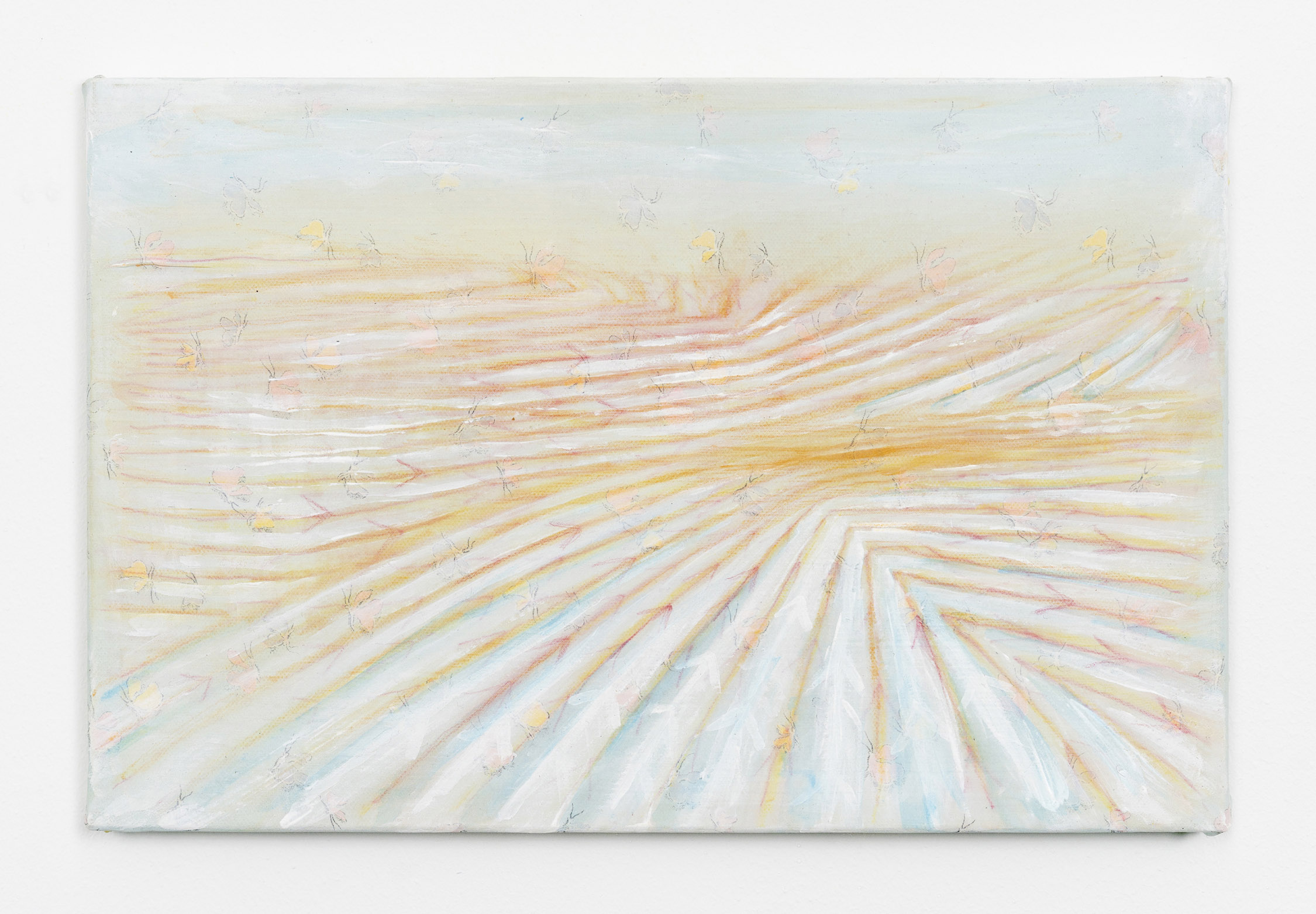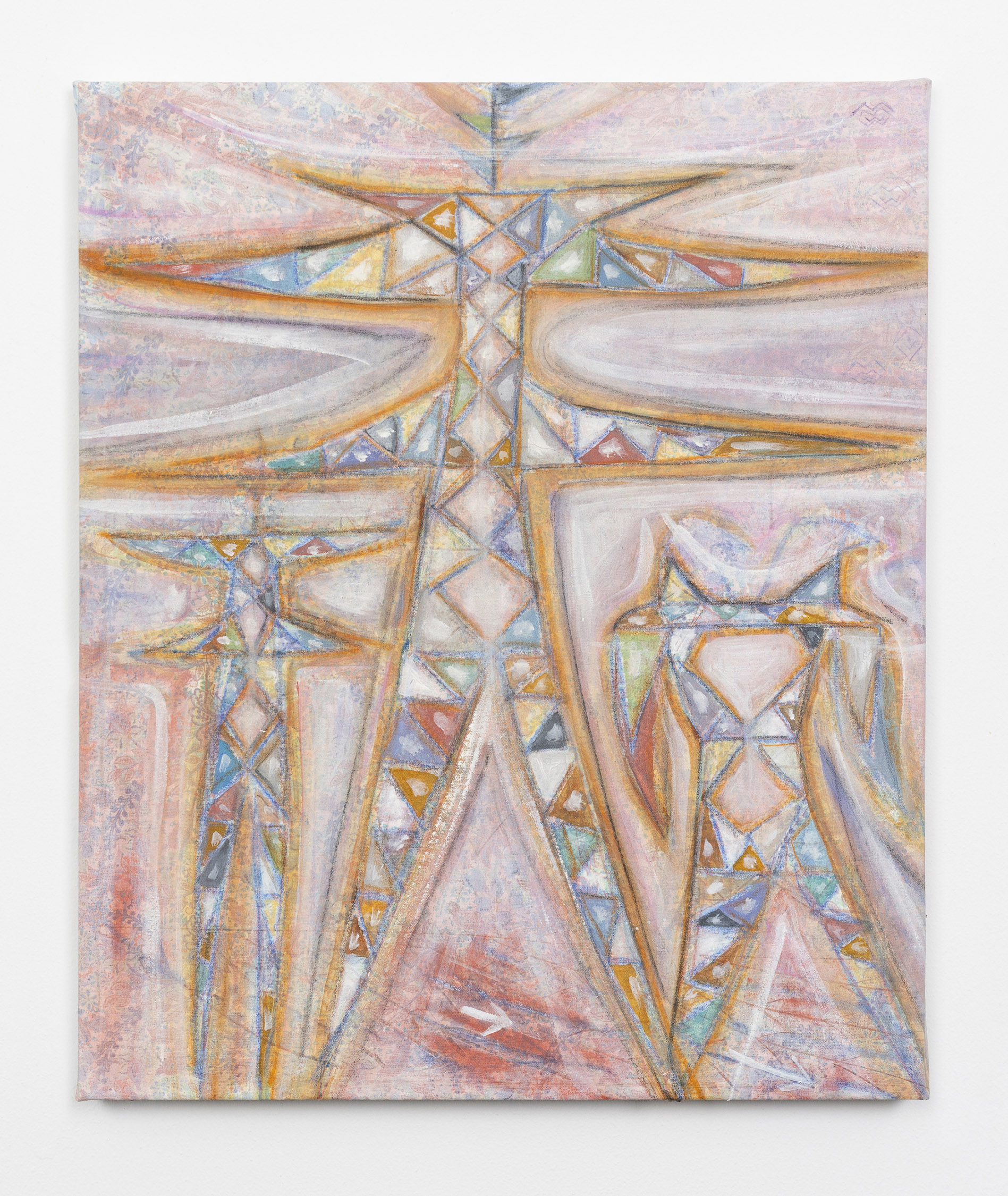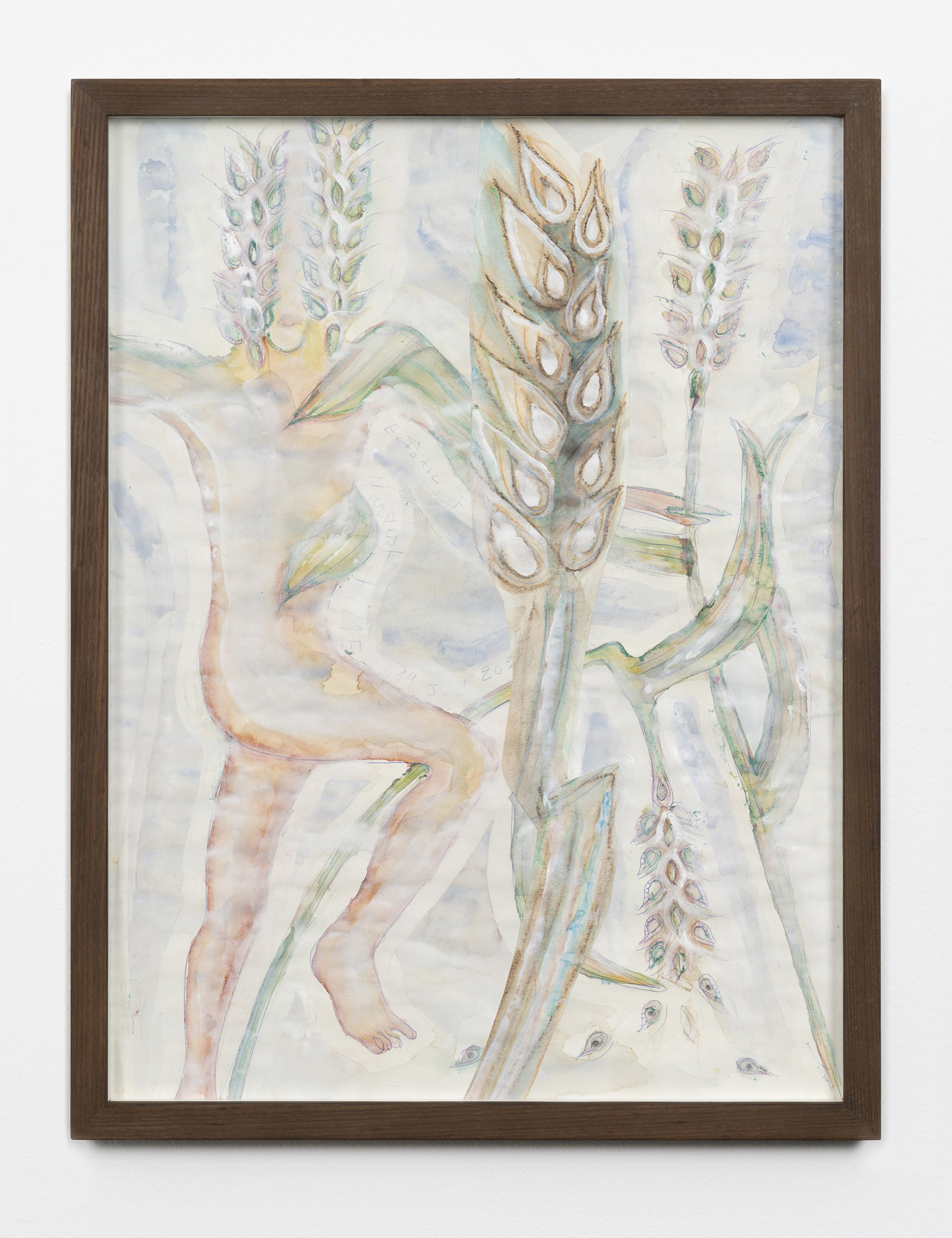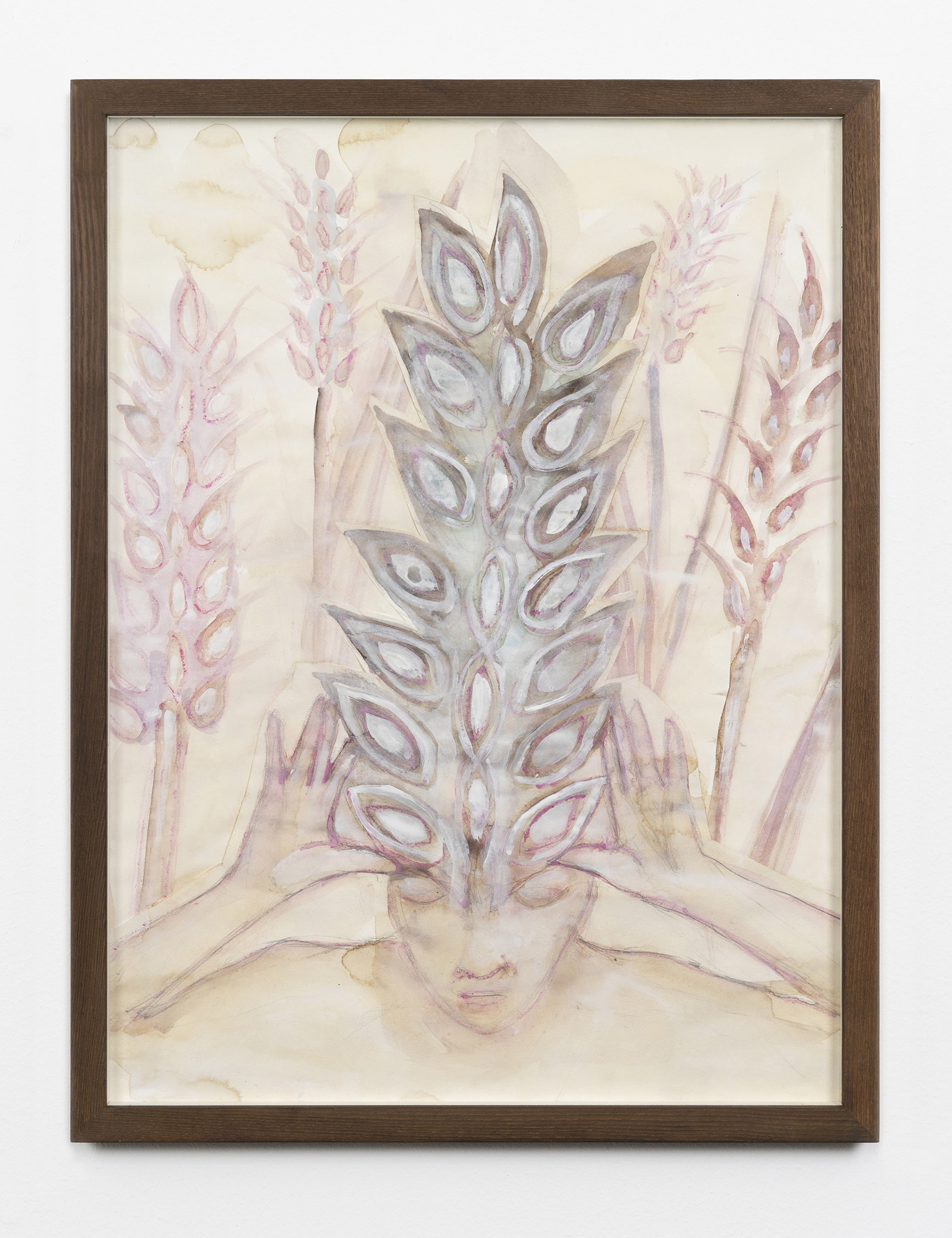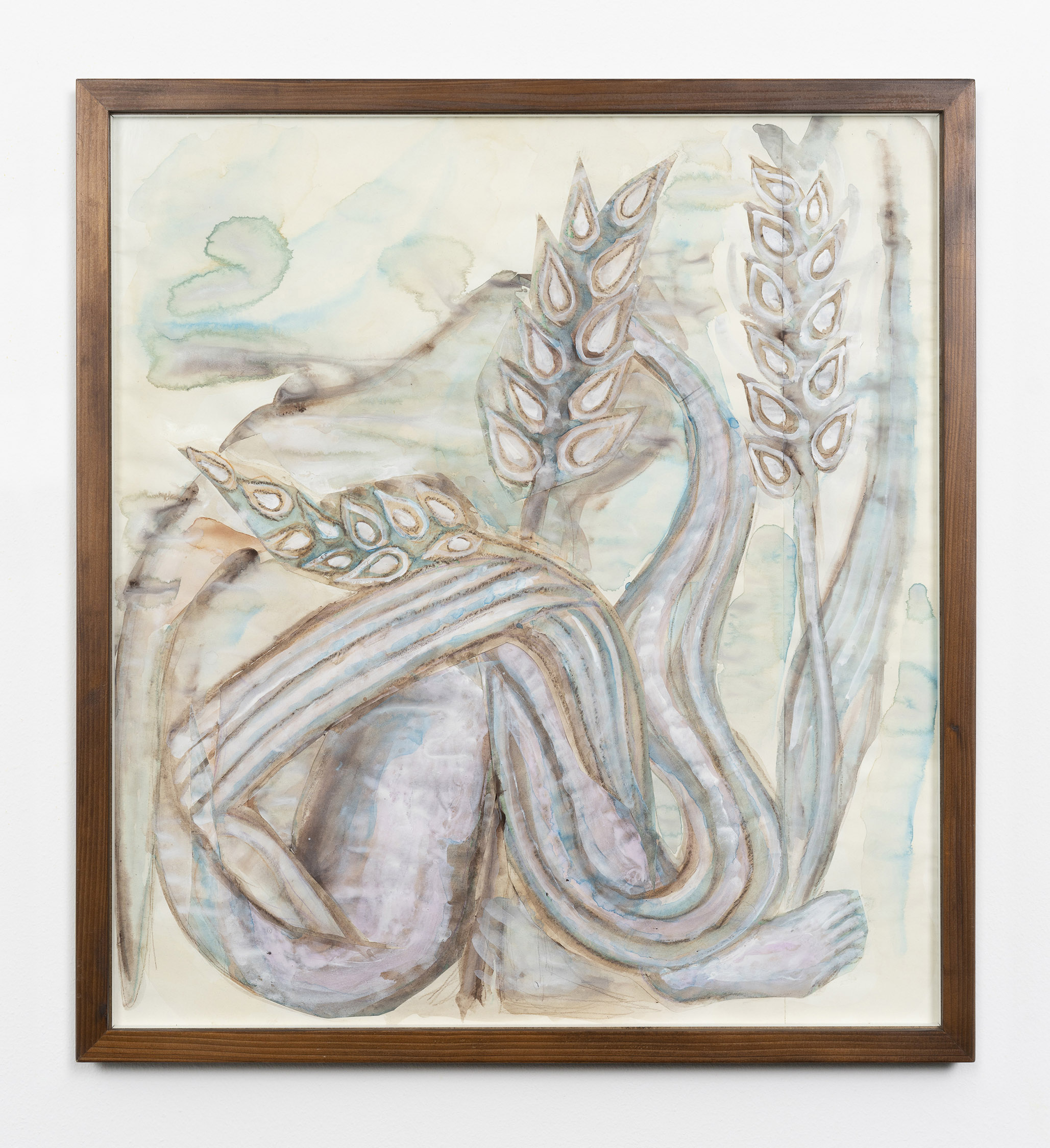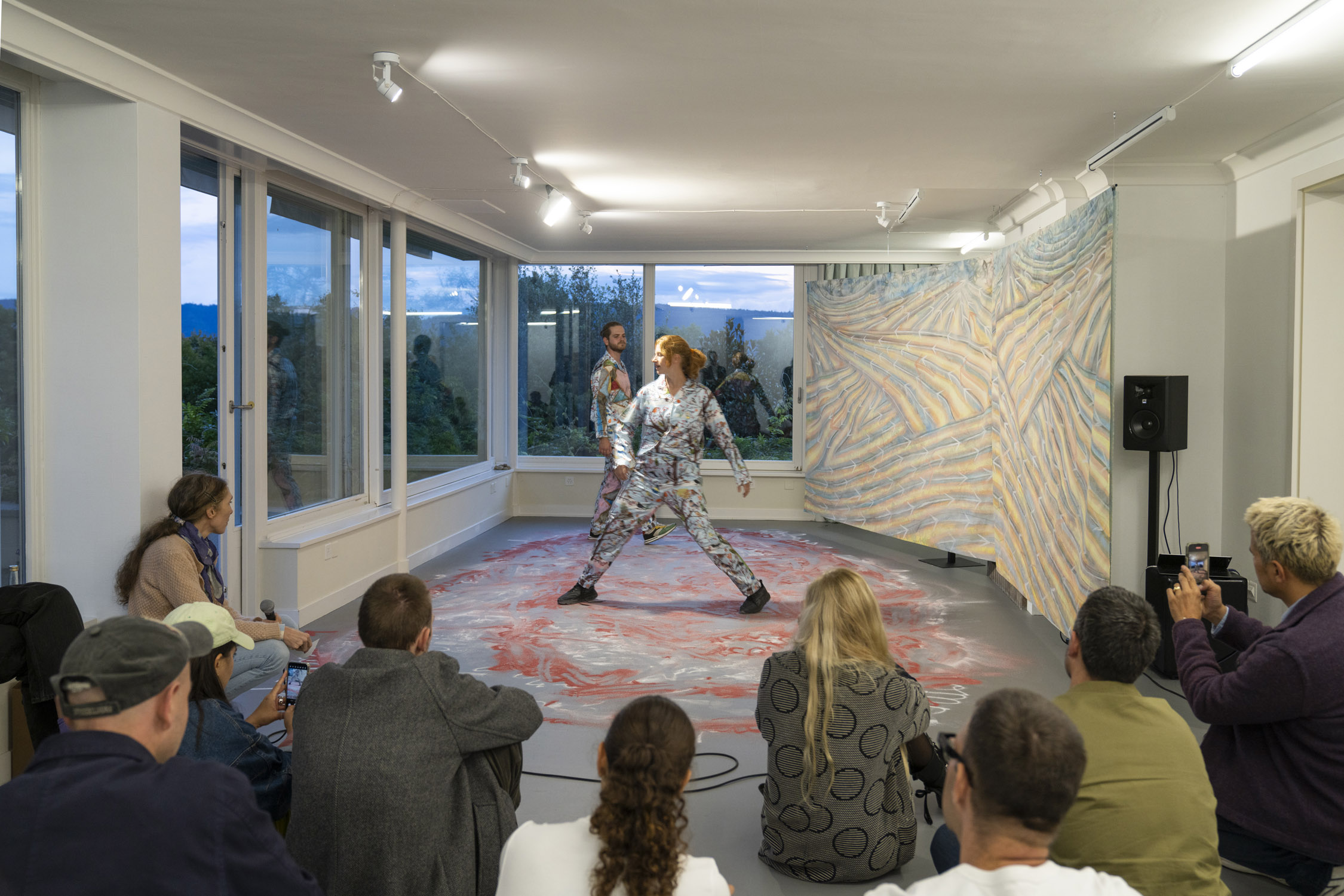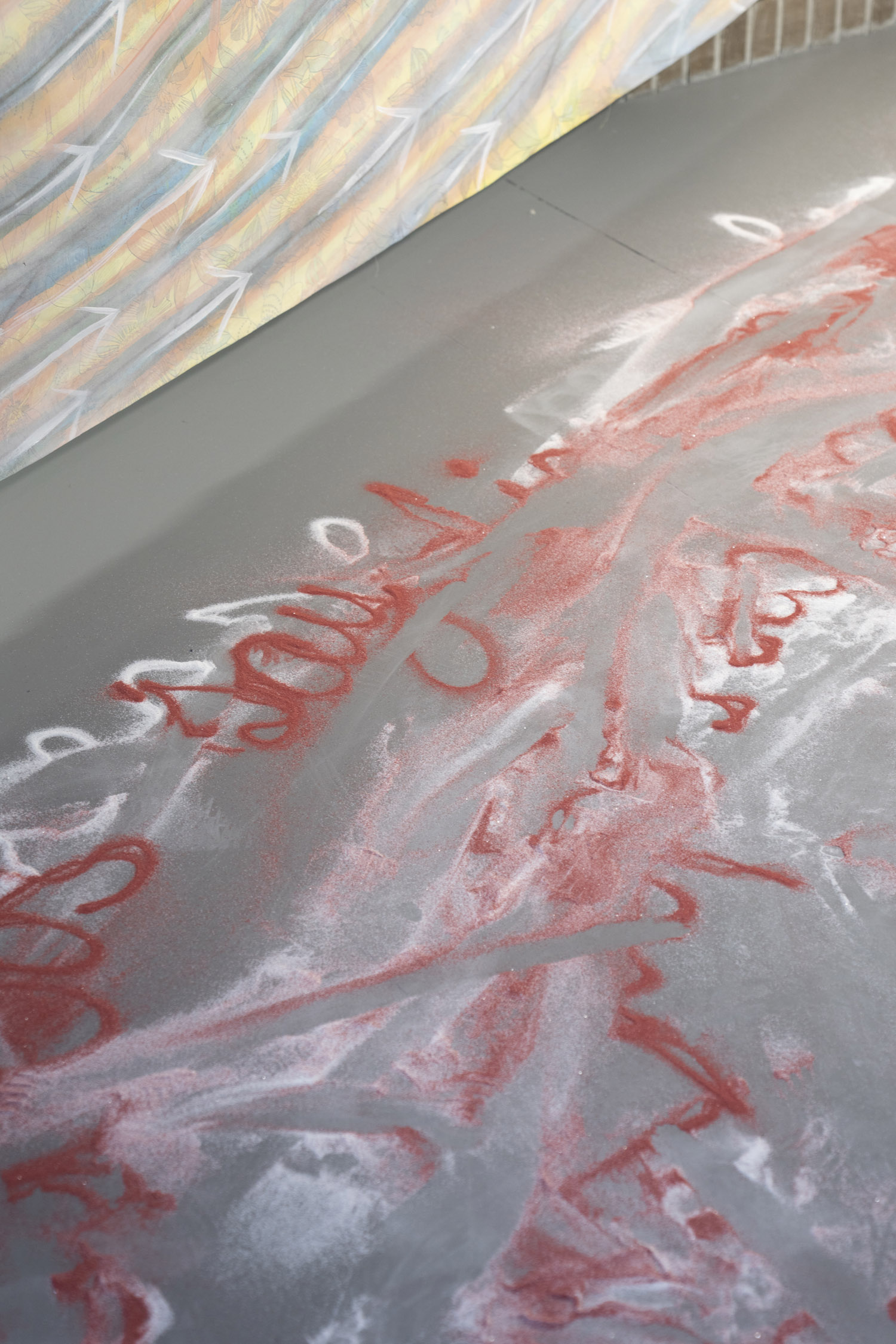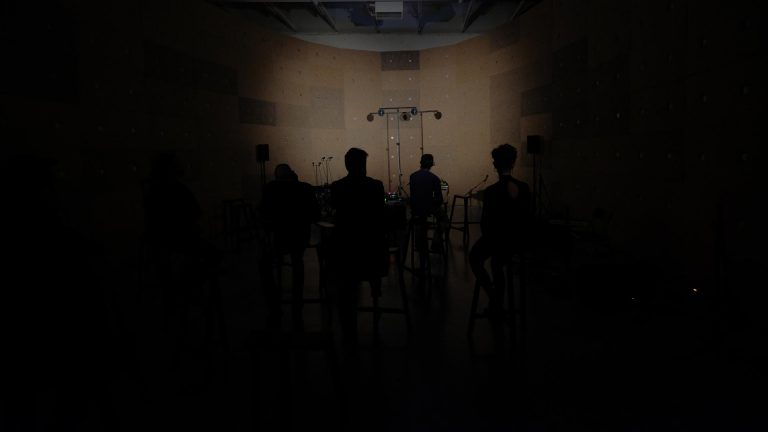suns.works is pleased to present Above you only the Flowers, a solo exhibition by Mathilde Rosier.
Above you only the Flowers features a new body of painted works by Rosier, in which the artist evolves her long-standing interest in the relation between nature, technology, and ritual. While entering a dialog with their specific site of display, the works form an own environment that will further be activated by a singular performance.
Living and working between the Bourgogne, France, and Basel, Rosier inhabits what is commonly known as “countryside”—vast landscapes that, although often idealized as bucolic refuges untainted by technology, are deeply marked by layers of human activity and history. Since becoming sedentary, people have shaped and transformed natural environments to sustain themselves, giving way to a great spectrum of cultural practices oriented towards the harvest.
In her new body of works, Rosier continues her exploration of different layers and narratives of domestication, as they materialize in the landscapes around her. Punctuating the horizontal lines of the fields, electric towers emerge into view. As sculptural landmarks they form a grid for the transmission of electric energy, produced by the conversion of grain growing on the very fields they are standing on. Rosier reduces their monumental quality to the size of a chest, transforming them into corporeal objects that could be contained inside a human body. With the same powdery palette, majestic fields engulf the viewer.
Rosier has executed her paintings not on regular canvas, but on manufactured textiles, printed with patterns of flowers, vegetation, birds, or butterflies, evoking a luxuriant, idyllic nature. These fabrics constitute a ready-made alphabet on which Rosier paints the “Song Fields” and “Electric Bodies.” While partially erasing the underneath pattern through her painting, it remains ghostly visible to the careful eye, suggesting that in fact both representational registries exist simultaneously.
The history of tapestry and printed textiles is closely linked to the invention of synthetical pigments in the 19th century. The latter became a massive industry, whose research branched out into many areas and ultimately also led to the development of chemicals for farming and pesticides. Thus, at the same time that landscapes were being radically transformed by the industrialization of agriculture, an ideal of untouched, paradisiacal nature emerged which was projected into the domestic space; onto tapestries, wallpapers, or curtains adorning interiors.
Rosier’s paintings set a stage for contemplation of this “domestication of the wild”—as it happens both in agriculture and in interior design—while giving back a sensory, “vibrational” quality to these environments and the bodies that inhabit it. As the title of the show suggests, Rosier invites us to take on a different perspective, to come close to the earth—and to immerse ourselves into the invisible flow of currents, the ever changing force of life that transforms everything constantly.

